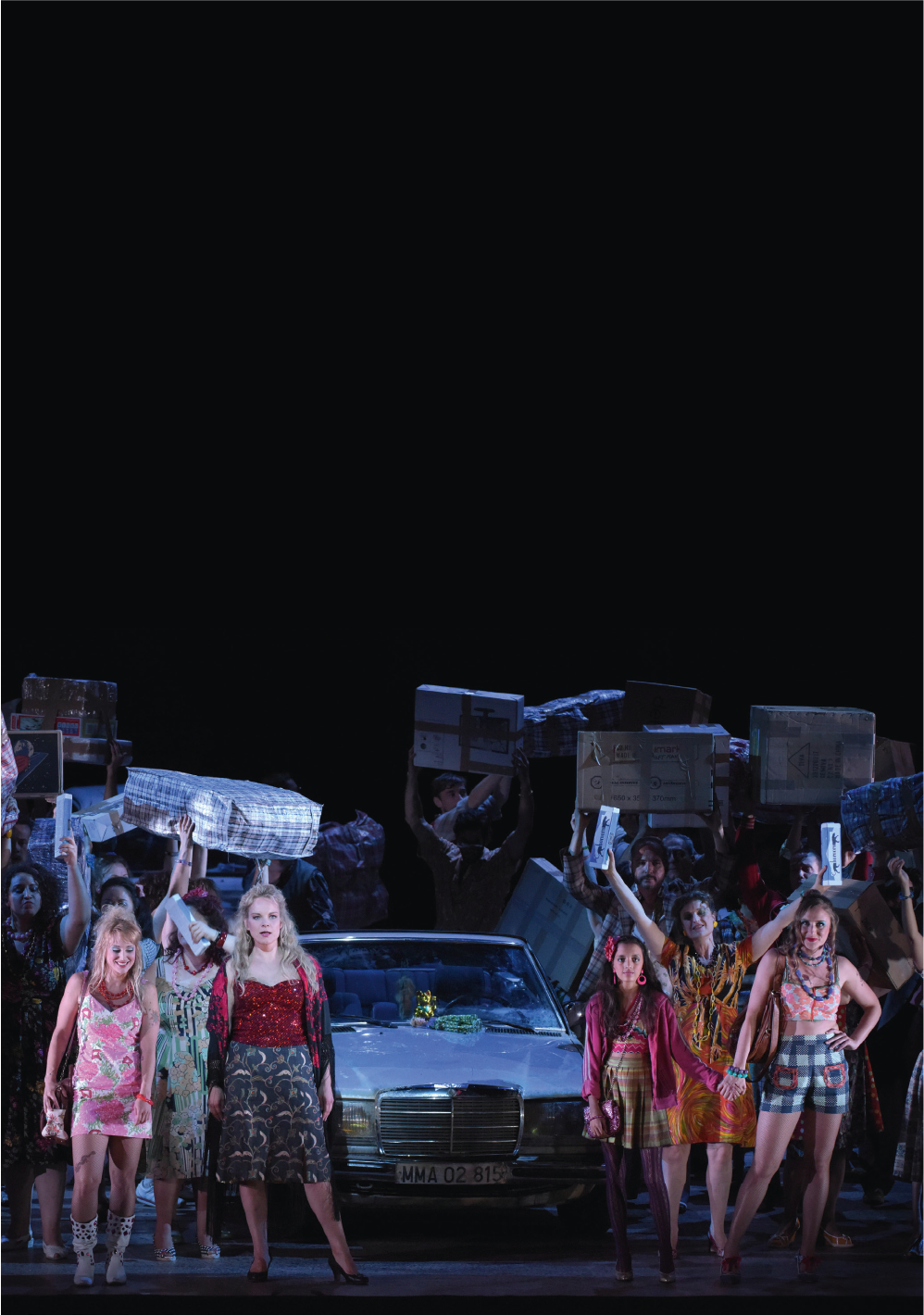Prices
Show / Event
Venue
Experience
No result. Clear filters or select a larger calendar range.
No show today.

A jewel of a role
Stage jewellery isn’t merely beautiful: it speaks volumes!
In numerous 19th-century opera and ballet libretti, particularly during the Second Empire, it played a key role as a theatrical device to propel the action or build suspense.
It also enhanced dramaturgy by identifying characters at a glance: the rich and the powerful, sorce- resses and femmes fatales were recognisable by their lavish ornaments ; conquerors and warriors by their opulent armour.
Tell me what jewellery you are wearing and I’ll tell you who you are.
Jewellery’s sparkle and splendour fascinates and excites covetous- ness. 19th-century librettists understood this well and used it as a source of temptation to propel the action forward and reveal the weaknesses of their characters. It is the casket of jewels given to her by Mephistopheles that precipitates Marguerite’s downfall in Faust (Charles Gounod) in the famous “Jewel Song”, and it is the glinting of gold that triggers the action in Richard Wagner’s Ring.
Sometimes, too, jewellery served to reveal an identity hitherto hidden or unknown, facilitating the coups de théâtre that so delighted audiences of the period.
1/5
In the 19th century, most performances at the Paris Opera were of new or recent works.
Jewellery at that time took on a functional dimension all the more crucial to the legibility of the plot given that supertitles did not yet exist and that works were heard amid the babble of conversation, a far cry from today’s religious silence.
Jewellery conveyed characters’ social status and helped to identify the protagonists. A crown indicated a king, a mitre a pope, a helmet a Valkyrie.
1/11
Associated with seduction, jewellery plays a key role in eroticism in a wide variety of ways: tiaras, bodices, belts, combs, bracelets and necklaces reveal or conceal the body all the better to enhance it.
Of course, these ornaments reflect the 19th century’s conception of womanhood and its taste for femmes fatales, Carmen being the most striking example of this. One might also wonder whom these jewels best served, the character or the diva – often a tragedienne – who wore them.
In ballets, tiaras had to be lighter so as not to impede the dancers’ movements, proof that symbolic jewellery did sometimes give precedence to practical considerations.
1/9
Stage jewellery at the Paris Opera - Exhibition
PRACTICAL INFORMATION
From 28 November 2024 to 28 March 2025 inclusive, at the Paris Opera's Library-Museum (Palais Garnier)
The exhibition is accessible as part of a Palais Garnier visit, except on days when it is exceptionally closed (check calendar) :
Immerse in the Paris Opera universe
Business Space
Back to top









































